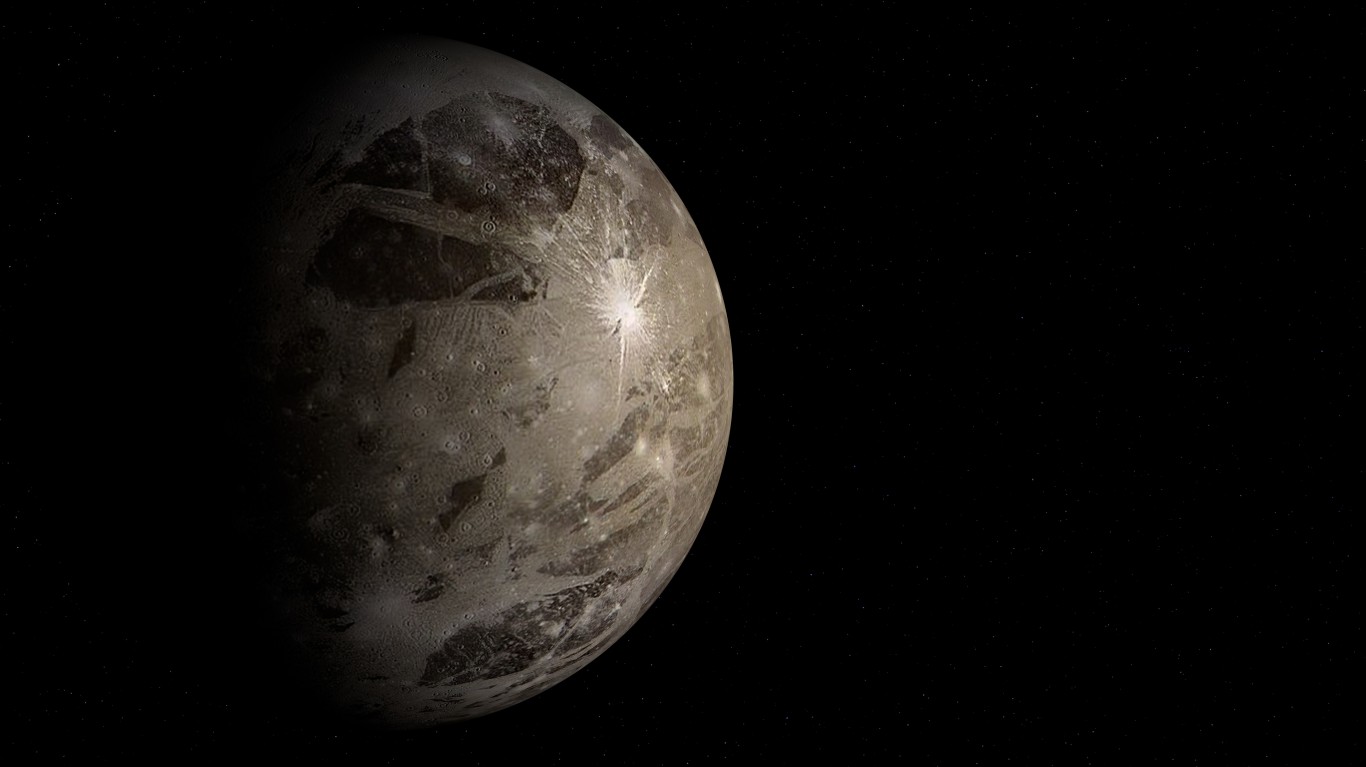
There are 214 moons in our solar system. Of these, 158 are “confirmed” and another 56 are “provisional,” meaning a moon that has been seen only once. Of the 16 moons that have mean diameters of over kilometers, four orbit Jupiter, four orbit Saturn and four orbit Uranus.
The largest moon in the solar system is Ganymede, which orbits Jupiter. It measures 5,262 mean kilometers and is followed closely in size by Titan, which orbits Saturn and measures 5,150 mean kilometers. (A kilometer is roughly 0.62 miles.) Ganymede is the ninth-largest object in the solar system, about 41% the size of Earth.
[in-text-ad]
The NASA Solar System Explorer says about Ganymede:
Jupiter’s moon Ganymede (“GAN uh meed”) is the largest moon in our solar system and the only moon with its own magnetic field. The magnetic field causes auroras, which are ribbons of glowing, electrified gas, in regions circling the moon’s north and south poles.
Galileo Galilei discovered Ganymede on January 7, 1670. It was named after a cub bearer of the Greek god Zeus, who was known as Jupiter to the Romans. Galileo originally thought Ganymede might be a star.
Ganymede completes an orbit of Jupiter every seven days and three hours. It is made up of rock and frozen water in roughly equal parts. Frozen ice covers almost its entire surface. According to The New York Times, the NASA Galileo spacecraft found what may have been water under the surface of this ice. The Galileo spacecraft flew by Ganymede six times between 1996 and 2000. JUpiter ICy moons Explorer will reach Jupiter in July 2031 and will spend four years exploring Jupiter and three of its moons: Ganymede, Callisto and Europa.
Click here to read about the 40 most important events in the history of space exploration.
It’s Your Money, Your Future—Own It (sponsor)
Retirement can be daunting, but it doesn’t need to be.
Imagine having an expert in your corner to help you with your financial goals. Someone to help you determine if you’re ahead, behind, or right on track. With SmartAsset, that’s not just a dream—it’s reality. This free tool connects you with pre-screened financial advisors who work in your best interests. It’s quick, it’s easy, so take the leap today and start planning smarter!
Don’t waste another minute; get started right here and help your retirement dreams become a retirement reality.
Thank you for reading! Have some feedback for us?
Contact the 24/7 Wall St. editorial team.

